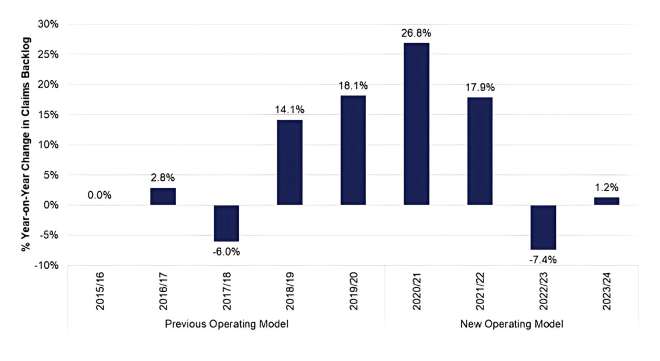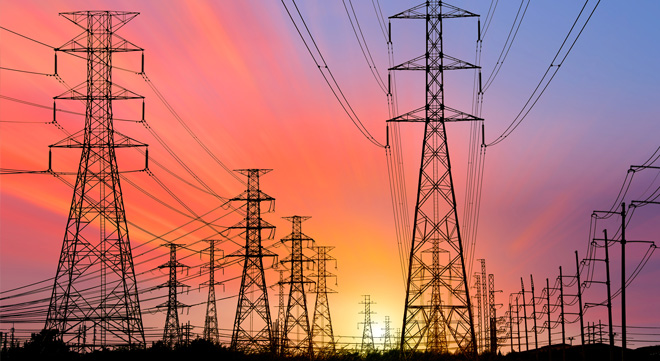It’s official: South Africans could see their monthly electricity bills jump by as much as 36% from April next year, pending approval of Eskom’s latest three-year revenue application by the National Energy Regulator of South Africa (NERSA).
NERSA has published Eskom’s Multi-Year Price Determination (MYPD) 6 revenue application for the financial years 2026 to 2028, covering the period from 1 April 2025 to 31 March 2028.
Eskom is applying for substantial revenue increases over the next three years: R446 billion for the 2026 financial year, R495 billion for 2027, and R537 billion for 2028. For customers, this means steep price hikes ahead, with proposed average increases of 36.15% from 1 April 2025 to 31 March 2026, 11.81% from 1 April 2026 to 31 March 2027, and 9.10% from 1 April 2027 to 31 March 2028.
The Regulator announced that it will consult with stakeholders before making any decisions on the proposed revenue targets.
The publication follows a storm of criticism sparked in early August when a draft of Eskom’s revenue application was leaked. Political parties and municipalities were quick to react, with the Democratic Alliance’s (DA) spokesperson on Electricity and Energy, Kevin Mileham, expressing outrage over NERSA’s decision to allow Eskom to retrospectively recover R8 billion through its Regulatory Clearing Account for the 2021/2022 financial year. Mileham warned that this move, resulting in a 4% tariff increase in 2025, coupled with Eskom’s application for a further 36.15% hike the same year, “would effectively price many households out of the electricity market”.
Public discontent escalated when a video circulated on social media, titled “You must pay 40% more on electricity because ANC Cadres looted R82 000 000 000”. The video alleged that South Africans were being “punished twice – you must pay your taxes, you must pay your electricity, and you must pay for the corruption and looting at Eskom”. NERSA swiftly denounced these claims as “incorrect, misleading and mischievous”.
Addressing the confusion, NERSA outlined the procedure for Eskom’s MYPD6 application, stressing that the current process involves determining a revenue requirement, not setting tariffs.
Eskom is required to submit to the Regulator the revenue it requires for NERSA to make its determination. According to NERSA, the application is based on the Electricity Regulation Act, MYPD, and input from stakeholders through public participation. This methodology is now in its sixth application; hence the process is referred to as MYPD 6.
The goal is to establish what is known as the “allowable revenue”, the amount Eskom can recover each year.
“It is important to emphasise that the current Eskom application is not a tariff application to be charged to any customer/end-user but a revenue requirement,” NERSA clarified.
The Regulator stressed that tariff approvals will come later, following NERSA’s analysis and a series of public consultations. NERSA will make the final tariff decisions, set to take effect from 1 April 2025, which Eskom can implement only once approved by NERSA.
Calib Cassim, chief financial officer of Eskom, said NERSA was entering the next phase of the regulatory process where NERSA will conduct an extensive public consultation about Eskom’s revenue application.
“We urge as many stakeholders as possible to become involved so NERSA can determine a key component in the funding of a constant electricity supply that drives economic growth and our quality of life for years to come,” he said.
Cassim noted that, as NERSA makes its decision, it will consider affordability for identified vulnerable sectors including indigent customers and certain industrial sectors.
“Eskom has made its revenue application based on the costs it will incur to efficiently provide electricity to the customer and it is a critical component in ensuring Eskom continues to provide reliable electricity services while improving its financial sustainability, through a migration to cost-reflective prices,” Cassim said.
Why a 36.15% price increase?
In its MYPD 6 revenue application summary, Eskom breaks down the key factors behind the 36.15% price increase projected for FY2026.
Eskom explains that the significant increase isn’t solely due to new revenue needs but is also rooted in previous decisions and agreements that impact pricing. According to Eskom, one notable factor is the inclusion of 10 additional Negotiated Pricing Agreements (NPAs) for FY2026, which add about 5.7% to the price increase for standard tariff customers. These NPAs, approved by NERSA under the frameworks set by the Department of Mineral Resources and Energy (DMRE), aim to keep electricity tariffs globally competitive for certain industries, helping to prevent the loss of baseload electricity sales that could negatively affect the economy.
Eskom attributes approximately 10% of the 2026 price hike to what it describes as “previous inadequate NERSA decisions” that, it states, failed to account for the economic realities of past fiscal years. This figure includes adjustments for the FY2024 decisions and partially factors in FY2025, creating a cumulative impact on the FY2026 pricing.
Primary energy costs are another major contributor, driven by Eskom’s continued reliance on coal-fired power stations as Independent Power Producers (IPPs) have not come online as expected.
Operating costs are also under scrutiny, requiring adjustments to align with more realistic financial targets.
In efforts to move towards financial sustainability, Eskom states it is gradually increasing its return on assets (ROA) percentage.
This is in line with a request by the Minister of Finance to allow for Eskom’s migration towards financial sustainability and lessening the burden on the fiscus,” Eskom states.
The costs associated with IPPs also include a return on assets that matches their weighted average cost of capital (WACC).
Additionally, the introduction of carbon tax liability from 1 January 2026 adds another layer to the price increase. This tax, impacting the last quarter of FY2026 and continuing into FY2027, further influences Eskom’s revenue requirements.
Ultimately, Eskom argues that these adjustments are necessary to ensure the long-term stability of South Africa’s electricity supply and its own financial recovery.

Beware of the fine print – proposed update on Eskom’s retail tariff plan (RTP)
In addition to the MYPD 6 application, Eskom has submitted a new retail tariff plan (RTP), proposing structural changes set to take effect from 1 April 2025, pending NERSA approval.
Eskom previously submitted RTPs in 2020 and 2022, but both were rejected. According to Eskom, the latest revised plan aims to align tariff rates with divisional costs, modernise the structures to reflect the evolving energy industry, and ensure revenue recovery.
“The current tariff rates no longer accurately reflect the different services provided by Eskom. Furthermore, the evolving nature of the energy industry necessitates the modernisation of tariff structures. Changes such as the increasing prevalence of customer-owned generation and the evolving patterns of grid usage require tariff structures that can adapt to these changes,” Eskom notes in its summary.
The plan notes that current tariffs fail to accurately represent costs associated with energy, network, and retail services, due to the application of average price increases. Eskom argues that accurate charges are crucial to ensure sustainability across the industry, including private participants, and to safeguard all customers’ interests.
The proposed structural changes involve designing all charges using the updated NERSA-approved forecast volumes, divisional cost splits, and cost allocation methods include:
- Energy rates to reflect wholesale purchase structure where energy charges are split into variable time-of-use (TOU) charges, a fixed generation capacity charge and a legacy charge.
- Rationalising local-authority tariffs into three categories, Municflex for large power users (LPUs), Municrate for small power users (SPUs), and a Public Lighting tariff. This rationalisation will reduce the complexity simplifying the sales and revenue forecasting processes for Eskom and municipalities.
- Basing service charges on points of delivery (PODs) instead of the current per account to ensure fairness.
- Removing inclining block tariff (IBT) rates for Homepower tariffs by converting this tariff’s charges to a cost-reflective tariff structure.
The MYPD 6 application can be accessed on the NERSA website and is also available on Eskom’s website.



